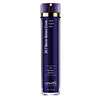What's inside
What's inside
 Key Ingredients
Key Ingredients

 Benefits
Benefits

 Concerns
Concerns

 Ingredients Side-by-side
Ingredients Side-by-side

Water
Skin ConditioningC13-15 Alkane
SolventSqualane
EmollientPropanediol
SolventPolyglyceryl-5 Polyricinoleate
EmulsifyingBisabolol
MaskingCoco-Caprylate/Caprate
EmollientGlycerin
HumectantMagnesium Sulfate
Panthenol
Skin ConditioningGlyceryl Behenate
Emollient1,2-Hexanediol
Skin ConditioningButylene Glycol
HumectantHeptapeptide-7
Skin ConditioningAcetyl Sh-Hexapeptide-5 Amide Acetate
Skin ConditioningNicotiana Benthamiana Hexapeptide-40 Sh-Polypeptide-76
Skin ConditioningCeramide AP
Skin ConditioningCeramide EOP
Skin ConditioningCeramide NP
Skin ConditioningTremella Fuciformis Extract
HumectantAllantoin
Skin ConditioningOryza Sativa Bran Oil
EmollientArginine
MaskingGlycosphingolipids
EmollientPhytosphingosine
Skin ConditioningCholesterol
EmollientTetraacetylphytosphingosine
Skin ConditioningPolyglyceryl-6 Octastearate
EmulsifyingStearic Acid
CleansingCetearyl Alcohol
EmollientGlyceryl Glucoside
HumectantGlyceryl Stearate
EmollientHydrogenated Polydecene
EmollientHydrogenated Lecithin
EmulsifyingLecithin
EmollientXanthan Gum
EmulsifyingTocopherol
AntioxidantCarnosine
Skin ConditioningPotassium Sorbate
PreservativeSodium Benzoate
MaskingPhenoxyethanol
PreservativeCitric Acid
BufferingQuaternium-90 Bentonite
Mica
Cosmetic ColorantTriethyl Citrate
MaskingZinc Stearate
Cosmetic ColorantEthylhexylglycerin
Skin ConditioningGluconolactone
Skin ConditioningCalcium Gluconate
HumectantHydroxyacetophenone
AntioxidantWater, C13-15 Alkane, Squalane, Propanediol, Polyglyceryl-5 Polyricinoleate, Bisabolol, Coco-Caprylate/Caprate, Glycerin, Magnesium Sulfate, Panthenol, Glyceryl Behenate, 1,2-Hexanediol, Butylene Glycol, Heptapeptide-7, Acetyl Sh-Hexapeptide-5 Amide Acetate, Nicotiana Benthamiana Hexapeptide-40 Sh-Polypeptide-76, Ceramide AP, Ceramide EOP, Ceramide NP, Tremella Fuciformis Extract, Allantoin, Oryza Sativa Bran Oil, Arginine, Glycosphingolipids, Phytosphingosine, Cholesterol, Tetraacetylphytosphingosine, Polyglyceryl-6 Octastearate, Stearic Acid, Cetearyl Alcohol, Glyceryl Glucoside, Glyceryl Stearate, Hydrogenated Polydecene, Hydrogenated Lecithin, Lecithin, Xanthan Gum, Tocopherol, Carnosine, Potassium Sorbate, Sodium Benzoate, Phenoxyethanol, Citric Acid, Quaternium-90 Bentonite, Mica, Triethyl Citrate, Zinc Stearate, Ethylhexylglycerin, Gluconolactone, Calcium Gluconate, Hydroxyacetophenone
Water
Skin ConditioningCarthamus Tinctorius Oleosomes
EmollientButyrospermum Parkii Butter
Skin ConditioningMacadamia Integrifolia Seed Oil
Skin ConditioningNiacinamide
SmoothingYeast Extract
Skin ConditioningAmmonium Acryloyldimethyltaurate/Vp Copolymer
Helianthus Annuus Seed Oil
EmollientPhospholipids
Skin ConditioningAlpha-Arbutin
AntioxidantHyaluronic Acid
HumectantOphiopogon Japonicus Root Extract
Skin ConditioningHydrolyzed Candida Saitoana Extract
Skin ProtectingSea Whip Extract
Skin ConditioningLycium Chinense Fruit Extract
AntioxidantVaccinium Angustifolium Fruit Extract
Skin ProtectingVaccinium Macrocarpon Fruit Extract
AstringentRosmarinus Officinalis Leaf Extract
AntimicrobialPanthenol
Skin ConditioningSerum Albumin
HumectantTocopheryl Acetate
AntioxidantUbiquinone
AntioxidantAlanyl Glutamine
HumectantLeuconostoc/Radish Root Ferment Filtrate
AntimicrobialXanthan Gum
EmulsifyingPhytic Acid
Polysorbate 20
EmulsifyingCaprylic/Capric Triglyceride
MaskingPhenoxyethanol
PreservativeCaprylyl Glycol
EmollientEthylhexylglycerin
Skin ConditioningHexylene Glycol
EmulsifyingPotassium Sorbate
PreservativeSodium Chloride
MaskingWater, Carthamus Tinctorius Oleosomes, Butyrospermum Parkii Butter, Macadamia Integrifolia Seed Oil, Niacinamide, Yeast Extract, Ammonium Acryloyldimethyltaurate/Vp Copolymer, Helianthus Annuus Seed Oil, Phospholipids, Alpha-Arbutin, Hyaluronic Acid, Ophiopogon Japonicus Root Extract, Hydrolyzed Candida Saitoana Extract, Sea Whip Extract, Lycium Chinense Fruit Extract, Vaccinium Angustifolium Fruit Extract, Vaccinium Macrocarpon Fruit Extract, Rosmarinus Officinalis Leaf Extract, Panthenol, Serum Albumin, Tocopheryl Acetate, Ubiquinone, Alanyl Glutamine, Leuconostoc/Radish Root Ferment Filtrate, Xanthan Gum, Phytic Acid, Polysorbate 20, Caprylic/Capric Triglyceride, Phenoxyethanol, Caprylyl Glycol, Ethylhexylglycerin, Hexylene Glycol, Potassium Sorbate, Sodium Chloride
 Reviews
Reviews

Ingredients Explained
These ingredients are found in both products.
Ingredients higher up in an ingredient list are typically present in a larger amount.
Ethylhexylglycerin (we can't pronounce this either) is commonly used as a preservative and skin softener. It is derived from glyceryl.
You might see Ethylhexylglycerin often paired with other preservatives such as phenoxyethanol. Ethylhexylglycerin has been found to increase the effectiveness of these other preservatives.
Panthenol is a common ingredient that helps hydrate and soothe the skin. It is found naturally in our skin and hair.
There are two forms of panthenol: D and L.
D-panthenol is also known as dexpanthenol. Most cosmetics use dexpanthenol or a mixture of D and L-panthenol.
Panthenol is famous due to its ability to go deeper into the skin's layers. Using this ingredient has numerous pros (and no cons):
Like hyaluronic acid, panthenol is a humectant. Humectants are able to bind and hold large amounts of water to keep skin hydrated.
This ingredient works well for wound healing. It works by increasing tissue in the wound and helps close open wounds.
Once oxidized, panthenol converts to pantothenic acid. Panthothenic acid is found in all living cells.
This ingredient is also referred to as pro-vitamin B5.
Learn more about PanthenolPhenoxyethanol is a preservative that has germicide, antimicrobial, and aromatic properties. Studies show that phenoxyethanol can prevent microbial growth. By itself, it has a scent that is similar to that of a rose.
It's often used in formulations along with Caprylyl Glycol to preserve the shelf life of products.
Potassium Sorbate is a preservative used to prevent yeast and mold in products. It is commonly found in both cosmetic and food products.
This ingredient comes from potassium salt derived from sorbic acid. Sorbic acid is a natural antibiotic and effective against fungus.
Both potassium sorbate and sorbic acid can be found in baked goods, cheeses, dried meats, dried fruit, ice cream, pickles, wine, yogurt, and more.
You'll often find this ingredient used with other preservatives.
Learn more about Potassium SorbateWater. It's the most common cosmetic ingredient of all. You'll usually see it at the top of ingredient lists, meaning that it makes up the largest part of the product.
So why is it so popular? Water most often acts as a solvent - this means that it helps dissolve other ingredients into the formulation.
You'll also recognize water as that liquid we all need to stay alive. If you see this, drink a glass of water. Stay hydrated!
Learn more about WaterXanthan gum is used as a stabilizer and thickener within cosmetic products. It helps give products a sticky, thick feeling - preventing them from being too runny.
On the technical side of things, xanthan gum is a polysaccharide - a combination consisting of multiple sugar molecules bonded together.
Xanthan gum is a pretty common and great ingredient. It is a natural, non-toxic, non-irritating ingredient that is also commonly used in food products.
Learn more about Xanthan Gum